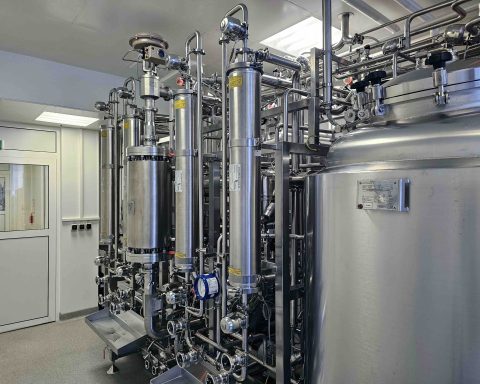Fats consist of a wide group of compounds that are generally soluble in organic solvents and generally insoluble in water. Chemically, fats are triglycerides, triesters of glycerol, and several fatty acids[1]. Fats may be either solid or liquid at room temperature depending on their structure and composition.
Although the words oils, fats, and lipids are all used to refer to fats, oils are usually used to refer to fats that are liquids at normal room temperature, while fats are usually used to refer to fats that are solids at normal room temperature. Lipids are used to refer to both liquid and solid fats, along with other related substances, usually in a medical and biochemical context. There are many different kinds of fats, but each is a variation on the same chemical structure. All fats are derivatives of fatty acids and glycerol.
Sources
The common sources of fats are butter, ghee, cheese, meat, egg yolk, milk, nuts, etc.
Classification
There are two types of fat:
Saturated Fats
It has no double bonds and is solids at room temperature. Butter, ghee, etc are saturated fats. High intake of saturated fats increases blood cholesterol levels that can lead to coronary disorders and high blood pressure[2]. Thus people who have a sedentary lifestyle such as old people should reduce the intake of saturated fats. However, people who involved in heavy labor fat intake should be more, as their energy requirement is high.
Unsaturated fats
It has one or more double bonds and is liquid at room temperature. Oils are unsaturated fats. Unsaturated fats may be monounsaturated fats, polyunsaturated fats, trans fats, cis fats, omega fatty acids, etc.
Depending on the dietary requirements, fats are two kinds:
Essential fats
Essential fats are those fats that are not synthesized by the body and have to be included in the diet. For example, linoleic acid, linolenic acid, arachidonic acid, etc.
Non-essential fats
Non-essential fats are those fats that are synthesized by the body and are not necessary for the diet. For example, glycine.
Functions of Fats:
a) They are the chief energy stores of the body, which form an important source of energy during starvation or other emergencies.
b) Fats play a role in the absorption of fat-soluble vitamins like vitamins A, D, E, and K.
c) Regulate cholesterol, so act as important regulating compounds.
d) Help to maintain healthy skin and hair
GOOD FATS, BAD FATS
So, from the above discussion, we can tell that all fats are not alike. Some types of fats are essential for good health. Other fats can raise blood cholesterol levels or have other negative effects on cardiovascular health[3]. Eating too much fat of all types can add excess calories and lead to weight gain. This handout will help us sort out the “good” (heart-healthy) fats from the “bad” (unhealthy) fats.
Heart Healthy (‘GOOD’) Fats
The fats in this category are unsaturated fats (the term unsaturated refers to the chemical structure of these fats). Unsaturated fats are found in plant foods or in fish that eat microscopic plants. Such as:
a) Omega-3 Fatty Acids (a type of Polyunsaturated Fat)
Sources:
– Fatty fish such as salmon, herring, sardines, and trout.
– Flaxseed, walnuts, and canola oil (all contain a less active form of omega-3)
Functions:
– The omega-3 fatty acid has been found to have many positive effects. For example, omega-3 fatty acids may reduce the risk of sudden cardiac death, help keep blood vessels flexible, and reduce excess blood clotting.[/column]
b) Other Polyunsaturated Fats (called Omega-6 Fatty Acids)
Sources:
– Vegetable oils: corn oil, safflower oil, sesame oil, soybean oil, sunflower oil
– Soft (liquid or tub) margarine, ideally one that is trans-fat-free
– Walnuts
– Sunflower seeds, pumpkin seeds, sesame seeds
– Soy ‘nuts’ (roasted soybeans), soy nut butter and tofu
c) Monounsaturated Fats
Sources:
– Vegetable oils: olive oil, canola oil, peanut oil
– Nuts: almonds, cashews, peanuts, pecans, pistachios
– Avocado
– Peanut butter and almond butter
Functions:
– Other polyunsaturated fats and monounsaturated fats will lower LDL (‘bad’) cholesterol when used in place of saturated fat.
Unhealthy (‘BAD’) Fats
The fats in this category are saturated fats and trans fats[4]. Saturated fats are found primarily in high-fat meats and dairy foods. The foods listed below contain these unhealthy fats and should be avoided or eaten sparingly.
a) Saturated Fats
Sources:
– Fatty cuts of beef, pork, and lamb
– Poultry skin, chicken wings, dark meat chicken
– High-fat dairy products: cheese, butter, whole milk, 2% reduced-fat milk, cream, cream cheese, sour cream, ice cream
– Tropical oils: coconut oil, palm oil, palm kernel oil, cocoa butter
– Lard
b) Trans fatty acids (or ‘trans fats’)
Sources[5-6]:
– Stick margarine and some tub margarine
– Vegetable shortening (e.g. original Crisco)
– Fried foods: doughnuts, French fries, other deep-fried fast food items
– Commercially prepared foods containing partially hydrogenated oils: crackers, cookies, cakes, pastries, microwave popcorn, and other snack foods
Functions:
Both saturated fats and trans fats can raise LDL (the ‘bad’) cholesterol. Saturated and trans fats may also make the lining of blood vessels (the endothelium) less flexible. In addition, trans fats may depress the ‘good’ blood cholesterol (HDL cholesterol) when eaten in large quantities.
Summary
There is a common misconception that all body fat is bad. In truth, somebody fat is needed to protect the person’s health as well as supplying a reservoir of energy for performing various body functions. To better understand this, the total weight of body fat can be subdivided into three separate categories:
– Weight of ‘Essential Body Fat’ – This amount of body fat is needed to protect the body from infectious diseases and to protect the internal organs from bruising damage.
– Weight of ‘Reserve Body Fat’ – The amount of additional body fat that does not cause any medical risks, and provides a reservoir of “fuel” for use by the body.
– Weight of ‘Excess Body Fat’ – The amount of body fat that is over and above the combination of Essential Body Fat plus Reserve Body Fat. Excess Body Fat causes the risk of serious health problems such as strokes, heart attacks, diabetes, and certain forms of cancer.
From the basis of ‘Good Fats’ and ‘Bad Fats’ we can classify fats by the following ways: Here, MUFA = Mono-unsaturated Fatty Acids, PUFA = Poly-unsaturated Fatty Acids
References
[1] Brouwer IA, Wanders JA, Katan MB (2010) Effect of animal and industrial trans fatty acids on HDL and LDL cholesterol levels in humans – A Quantitative review. PLoS One 5: E9434.
[2] Jakobsen M (2008) Intake of ruminant trans fatty acids and risk of coronary heart disease International Journal of Epidemiol. 37: 173-82.
[3] Food Standards Agency Review Board (2007) Agency board paper: trans fatty acids.
[4] R Uauy, A Aro, R Clarke (2009) WHO Scientific Update on trans fatty acids: summary and conclusions. European Journal of Clinical Nutrition 63: S68–S75.
[5] Mozaffarian D, Katan M, Ascherio A et al (2006) Trans fatty acids and cardiovascular disease. New England Journal of Medicine 354 (13): 1601-1613.
[6] Bakker N, van’t Veer P, Zock PL. (1997) Adipose fatty acids and cancers of the breast, prostate and colon: and ecological study. International Journal of Cancer 72: 587–91.
About the Author
Sujan Banik, B. Pharm & M. Pharm in Clinical Pharmacy & Pharmacology. He is working as Product Development Officer in NIPRO JMI Pharma.








[…] is not the full article, to read the full article click here. If you want to backlinking with this article on original site, please contact. You may post on the […]